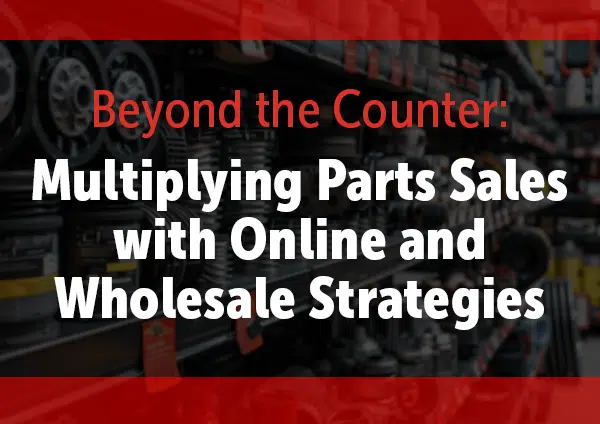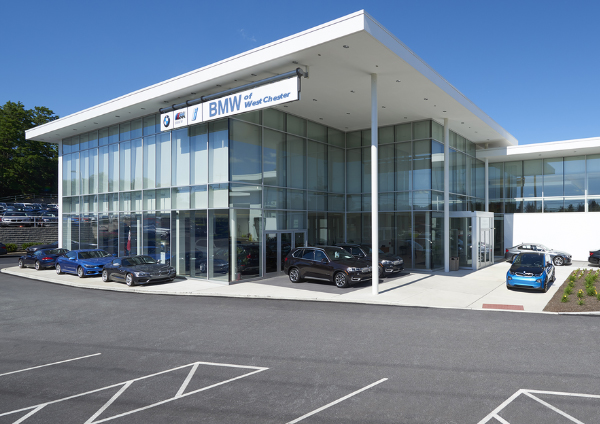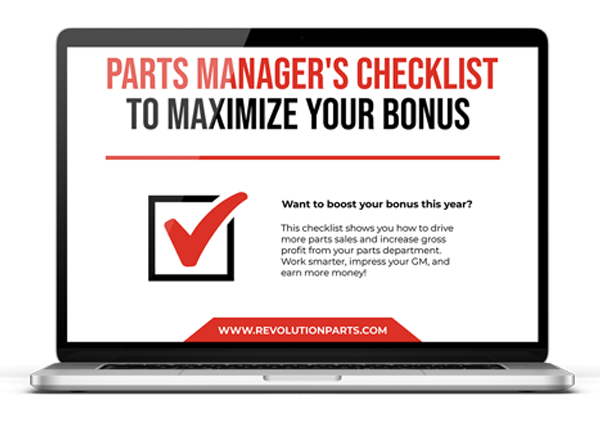Estimated read time: 3 minutes
“Online sales are not just a convenience, they’re a competitive edge. If you’re not online, you’re behind.”
— Derrick Crawford, Irvine BMW
284 million shoppers will be buying auto parts online by 2026.
That was the jaw-dropping stat that kicked off our recent webinar, Beyond the Counter: Multiplying Parts Sales with Online and Wholesale Strategies. With over 100 years of combined industry experience on our panel, our experts broke down how parts departments are going beyond the counter and into wholesale and eCommerce.
If you’re looking to grow revenue without adding headcount or clocking more hours, this is the playbook. Here’s a look at the key takeaways from this high-impact session.
The power of wholesale
“Wholesale isn’t just about moving parts, it’s about taking control of your department’s future.”
— Derrick Crawford, Irvine BMW
- Wholesale is critical because it’s something you can control. The service department and sales department may fluctuate with car sales, but wholesale gives your parts department stability.
- The profitability of wholesale is enhanced by manufacturer incentives. These programs can help you hit targets without depending on other departments.
- Don’t be afraid to compete, even with big players in the market. Wholesale allows you to create long-term relationships with body shops and mechanical shops, helping you build a reliable customer base.
Watch this 1-minute clip
Getting into eCommerce
“Everyone’s online now. If you’re not, you’re missing out on the opportunity to meet customers where they are.”
— Anthony Bubello, RevolutionParts
- The rise of online shopping isn’t slowing down. It’s only going to get bigger. By 2026, nearly 284 million people will be shopping for parts online. Are you ready for them?
- Customers now expect convenience, and that means having an online presence. If you’re not online, customers will find your competitors, no matter where they are.
- eCommerce doesn’t just increase sales. It opens doors to new customer segments, expands your reach, and offers a 24/7 sales channel, even when your physical store is closed.
Watch this 1-minute clip
Personal experience stories:
Craig Shield’s Story (Gateway GMC)
Craig shared how he saw eCommerce as the future of parts sales and pushed for it at Gateway GMC. Despite initial resistance from the dealership owner, he was determined after seeing a competitor’s larger stock order, which revealed their eCommerce success. Craig recalled, “I took a picture of their stock order and said, ‘This is what our competitors are doing. We need to do this.’” Once they started selling on Amazon, sales skyrocketed. “We turned it on during a holiday weekend, and I came in on my day off to start fulfilling orders because I knew how important it was,” he said, highlighting the hustle required to make eCommerce work.
Jensay Numa’s Story (RevolutionParts)
Jensay’s eCommerce journey started when he worked at a dealership and decided to create an eBay store to sell parts. Initially, his colleagues weren’t convinced, but he pushed forward, leading to success. “I opened an eBay page,” Jensay said, recalling his early entrepreneurial spirit. Over time, Jensay rose through the ranks, becoming a Parts Director, and he helped establish eCommerce departments at multiple dealerships. He noted, “I went from being a parts driver to creating eCommerce departments,” showing how eCommerce can be a game-changer in advancing one’s career and boosting sales for a dealership.
The power of convenience
“When you’re closed, I’m open. That’s what makes the difference in eCommerce.”
— Derrick Crawford, Irvine BMW
- Your local market is just one piece of the puzzle. The internet opens up a global market, allowing you to sell parts across regions, and even internationally.
- Convenience isn’t just for the consumer. eCommerce tools streamline your operations, reducing the need for additional staff and letting you automate key parts of the process.
- With tools like RevolutionParts, you can integrate your webstore, marketplace listings, and order fulfillment under one roof. One platform. All the tools you need to thrive.
Watch this 4-minute clip
Misconceptions about eCommerce
“The biggest misconception? That you need a huge staff to handle online parts sales.”
— Anthony Bubello, RevolutionParts
- You don’t need a huge team. You can start small and scale as needed. Many dealerships start with one or two staff members handling both online and traditional sales.
- Another myth is that eCommerce will cannibalize local business. In reality, online sales often complement local operations, providing opportunities for growth that wouldn’t exist otherwise.
- The initial setup can be overwhelming, but with the right tools, you can automate many processes, from inventory management to marketing.
Strategies for success
“Start with clear goals, and give your eCommerce strategy time to develop.”
— Craig Shield, Gateway GMC
- Set realistic expectations. Don’t expect instant success. Like any business, eCommerce requires a strategy, patience, and adjustments along the way.
- Use all available channels: webstores, marketplaces like eBay and Amazon, and even your dealership’s website. Each platform serves a different purpose and reaches different audiences.
- Invest in tools that help you manage listings, inventory, and orders all in one place. RevolutionParts simplifies this for you, reducing time spent managing multiple systems and helping you grow faster.
Watch this 3-minute clip
The big takeaway
“Want to grow your parts sales without extra overhead? eCommerce is the answer.”
— Anthony Bubello, RevolutionParts
If you’re not already selling parts online, now’s the time to start. As we’ve seen from our panelists, the benefits of building an online parts sales strategy are immense. It’s a low-cost, high-reward approach that gives you control over your department’s growth.
Whether it’s wholesale or eCommerce, you can multiply your parts sales by tapping into new revenue streams and reaching customers 24/7. And with the right tools, you can scale without hiring extra staff or spending endless hours on manual processes.



